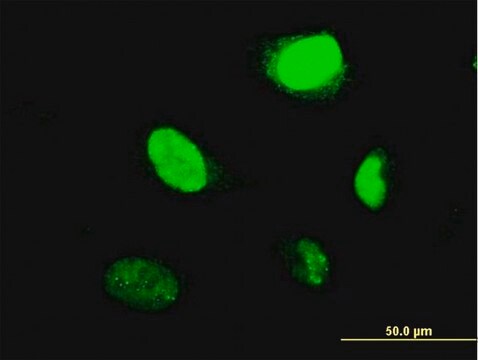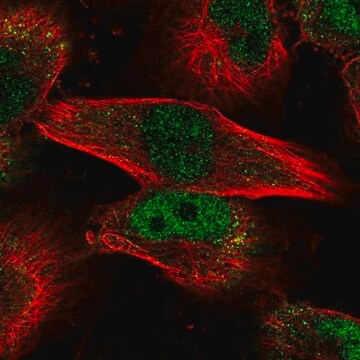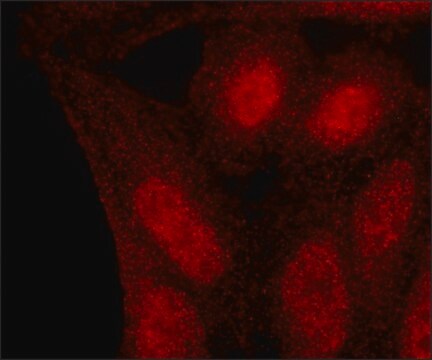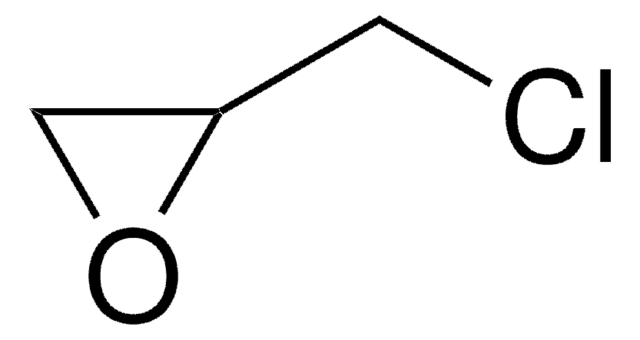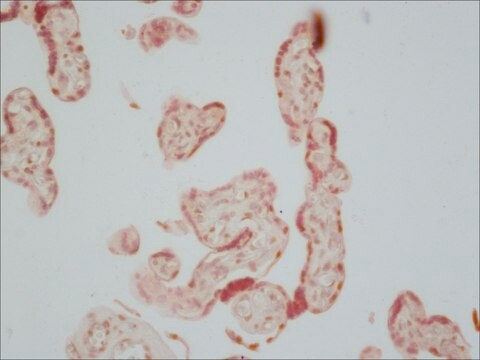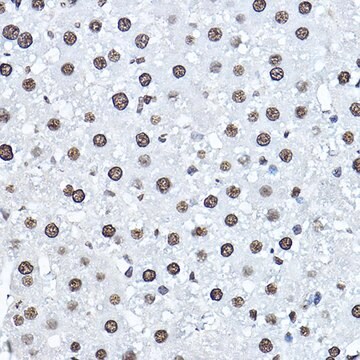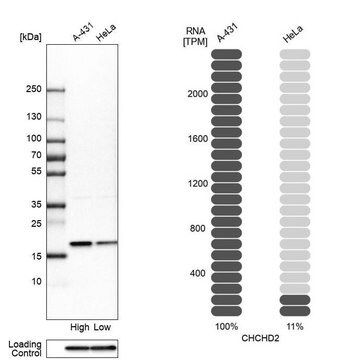MABE886
Anti-B-Myb Antibody, clone LX015.1
clone LX015.1, from mouse
Synonim(y):
Myb-related protein B, B-Myb, Myb-like protein 2
About This Item
Polecane produkty
pochodzenie biologiczne
mouse
Poziom jakości
forma przeciwciała
purified immunoglobulin
rodzaj przeciwciała
primary antibodies
klon
LX015.1, monoclonal
reaktywność gatunkowa
mouse, human
metody
western blot: suitable
izotyp
IgG1κ
numer dostępu NCBI
numer dostępu UniProt
Warunki transportu
wet ice
docelowa modyfikacja potranslacyjna
unmodified
informacje o genach
human ... MYBL2(4605)
Opis ogólny
Immunogen
Zastosowanie
Epigenetics & Nuclear Function
Transcription Factors
Western Blotting Analysis: A representative lot from an independent laboratory in NIH/3T3 cell lysates and in undifferentiated and differentiated F9 cell lysates (Knight, A. S., et al. (2009). Oncogene. 28(15):1737-1747.).
Western Blotting Analysis: A representative lot from an independent laboratory in cycling NIH/3T3 and F9 nuclear extracts (Muller, G. A., et al. (2012). Nucleic Acids Res. 40(4):1561-78.).
Western Blotting Analysis: A representative lot from an independent laboratory detected B-Myb wild-type cycling MEF cell lysates and not in B-Myb wild type G0 phase arrested MEF cell lysates. The same lot also detected B-Myb in G0 phase arrested and in cycling MEF cell lysates inappropriately expressing homozygous mutant B-Myb (Tavner, F., et al. (2007). Oncogene. 26(19): 2727-2735.).
Jakość
Western Blotting Analysis: 1 μg/mL of this antibody detected B-Myb in 10 μg of HEK293 cell lysate.
Opis wartości docelowych
Postać fizyczna
Przechowywanie i stabilność
Inne uwagi
Oświadczenie o zrzeczeniu się odpowiedzialności
Nie możesz znaleźć właściwego produktu?
Wypróbuj nasz Narzędzie selektora produktów.
Kod klasy składowania
12 - Non Combustible Liquids
Klasa zagrożenia wodnego (WGK)
WGK 1
Temperatura zapłonu (°F)
Not applicable
Temperatura zapłonu (°C)
Not applicable
Certyfikaty analizy (CoA)
Poszukaj Certyfikaty analizy (CoA), wpisując numer partii/serii produktów. Numery serii i partii można znaleźć na etykiecie produktu po słowach „seria” lub „partia”.
Masz już ten produkt?
Dokumenty związane z niedawno zakupionymi produktami zostały zamieszczone w Bibliotece dokumentów.
Nasz zespół naukowców ma doświadczenie we wszystkich obszarach badań, w tym w naukach przyrodniczych, materiałoznawstwie, syntezie chemicznej, chromatografii, analityce i wielu innych dziedzinach.
Skontaktuj się z zespołem ds. pomocy technicznej